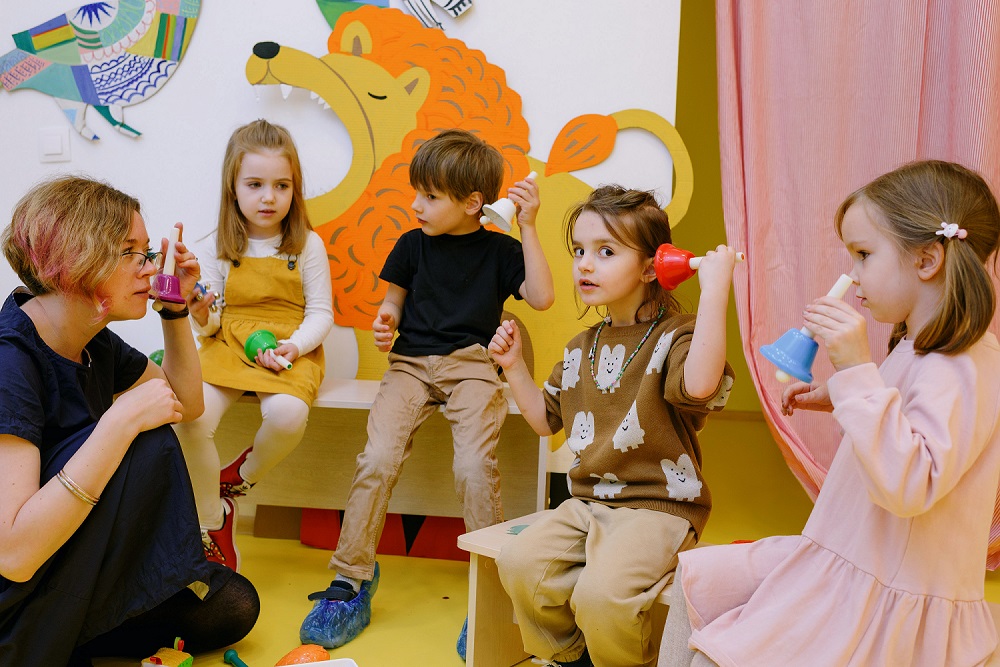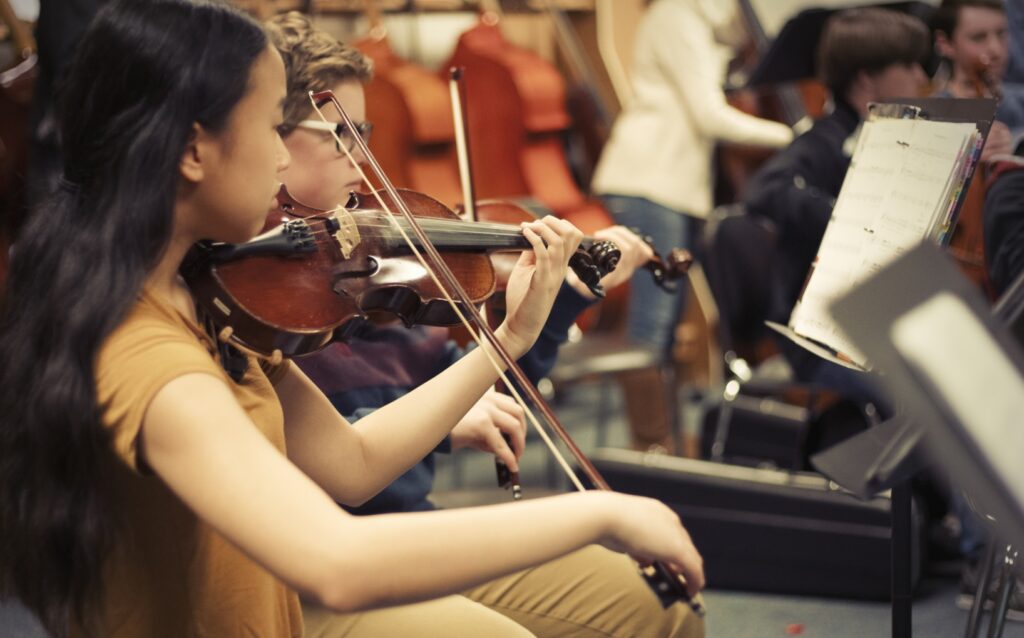An Instrumentalist in a Vocal World: Getting Comfortable with My Voice
An instrumental teacher landed a job at an elementary school, which required her to sing.
In college, my focus was instrumental music education. For over four years, I prepared myself to become a band director.
All that changed when I received a call from one of my previous college advisors. She wanted me to interview for an elementary school music position.
My second and shortest co-op experience in college was at an elementary school. While I loved the setting and the creative liberty I had with lesson planning as a primary school student-teacher, there was one thing that I wasn’t comfortable with: my singing voice.
My situation was stressful but not uncommon. I had just agreed to take a position that wasn’t quite in my specialty. Oftentimes, we go into music school thinking that we are going to find a job that perfectly fits what we studied. I’m pretty sure that you already know that the real (music) world isn’t like that. So, there I was: A freshly graduated, licensed instrumental teacher with a job at an elementary school. It was time to get comfortable with my voice.
Find Your Real Voice Type
I quickly learned that there isn’t a lot you can do to get comfortable with singing. I had spent countless hours singing pop songs up an octave in the car. But when I was in my classroom and was required to sing all day, I began to lose my voice. Something just wasn’t working.
So, I spent more time at the piano and less time singing to the radio. This allowed me to explore my range on the staff and see my limits more clearly. Pretty soon, I discovered that I was an alto, not a soprano like I had been told. While my tone was light, singing way up high was simply not a sustainable option. As I learned more about my voice, I stopped being concerned with gender stereotypes and embraced my lower register.
Match High or Match Low
 One week, I taught 10 classes the same singing game called “Lucy Locket.” One at a time, the students would look around the classroom for a hidden purse. The student searcher was the only one who didn’t know where the pocket purse was. The closer the searcher got to the purse, the louder we sang, and vice versa.
One week, I taught 10 classes the same singing game called “Lucy Locket.” One at a time, the students would look around the classroom for a hidden purse. The student searcher was the only one who didn’t know where the pocket purse was. The closer the searcher got to the purse, the louder we sang, and vice versa.
Singing “Lucy Locket” numerous time was tiring for my voice. I learned that it was OK to sing lower than your students. If they are very young, teach them that they can match high or match low with your singing.
At first, I was afraid to bring some songs down an octave, especially with my kindergarten students. But when I used a soprano recorder for their starting pitch, they began to catch on. After a couple of weeks, I found that my students could match high or low to me with no trouble.
Lean on Teaching Tools
Teaching tools were a powerful resource when singing in my sweet spot wasn’t enough. There are many great recordings out there that do the call and response for you. When I first started, I swore that I would only use my voice to teach music to my students. It’s great to have high aspirations for your classroom, but don’t make goals that are unreachable.
Later in the fall, I caught a cold and had no voice, but I still had to show up and teach. I learned that if you plan your recordings, games and transitions just right, you can teach a music class without using your voice at all.
By the time the middle of the year rolled around, I was no longer losing my voice regularly, even when I was ill. I found the perfect balance between using recordings and singing in my most comfortable range.
Get Used to Being Uncomfortable
To get used to being uncomfortable around my students, I had to do things that made me uncomfortable at home. As a musician and teacher, one of the best things you can do is to constantly push yourself artistically.
I challenged myself to learn numerous songs from the French version of “La Vie En Rose” to the pop song “Titanium.” I even tried to juggle to music and failed epically.
But somehow, it all translated into my classroom really well! The more I forced myself to do things that made me uncomfortable at home, the calmer and more confident I became in the classroom. Zen mind, beginner’s mind.
Make Some Noise
Part of my journey to becoming comfortable with my voice was to make noise — even bad noises. Just like with the clarinet, you have to squeak and squawk before you can play a ballad or sound like Benny Goodman.
On the way to and from work, I sang harmonies to punk songs and experimented with vowel shapes. It was gritty, out of tune and pretty terrible, but my car welcomed the noises just the same!
I always recommend singing music that can be loud and bad. To become proficient at something, you first must allow yourself to be confidently unskilled.
I also have a recording set up and have become good friends with it. Recordings never lie, so learn from them!
Understanding the Science Behind Voice Confrontation
Over the years, I have learned that singing is just as much about the body as it is about the mind. For me, it’s more like 60% mind, 40% body.
There are little tips and tricks to curb singing anxiety, such as eating foods high in potassium like bananas. This will help you out for the first couple of days but will ultimately only get you so far.
 What helped me become more confident was understanding the science about voice and sound. I never enjoyed hearing my singing or speaking voice, and I learned that there was a reason for this. It’s called voice confrontation.
What helped me become more confident was understanding the science about voice and sound. I never enjoyed hearing my singing or speaking voice, and I learned that there was a reason for this. It’s called voice confrontation.
Your brain interprets recordings differently than your voice in real-time. This is because of conduction. When you sing, you feel your voice conducting through the bones in your ears. However, when you listen to a recording, the sound is not conducted the same way. This makes a huge difference in perceived sound.
The article, “The Real Reason the Sound of Your Own Voice Makes You Cringe,” and the video, “Why Do I Hate the Sound of My Own Voice?”, explains the science behind why we dislike our voices so much. Once I understood this, everything became a little easier. I realized that my perception of my voice did not represent reality. When I took what I learned to my classroom, I found that I could project with no hesitation.
Increasing My Vocal Awareness
When I first started singing in front of my students, my voice felt disconnected and odd. I needed to increase my awareness of my voice; I wanted to be as mindful of my voice as I was of my fingertips.
At first, I wasn’t sure where to start. I knew that I needed to engage with my voice more often, but it seemed like there was something else to integrate.
One thing that increased my vocal awareness was massaging my jaw. Exercises like this helped to strengthen the synapses in my brain to focus on the vocal areas of my body.
 I also studied vocal awareness videos and courses like “The Secret of Vocal Awareness Vocal Exercises.” This information taught me to hold space for my voice. Vocal guru, Arthur Samuel Joseph, believes that our voice is not just a tool that we use in everyday life. It connects us on the most intimate levels, including socially and even spiritually.
I also studied vocal awareness videos and courses like “The Secret of Vocal Awareness Vocal Exercises.” This information taught me to hold space for my voice. Vocal guru, Arthur Samuel Joseph, believes that our voice is not just a tool that we use in everyday life. It connects us on the most intimate levels, including socially and even spiritually.
Just Have Fun
What I didn’t realize when I started as an elementary school music educator is that you don’t have to be the best vocalist to teach your students. Pupils love to play singing games, learn and enjoy themselves. With my background as an instrumentalist, I taught hundreds of kindergartners how to match pitch and simply to enjoy exploring sound.















